General information on fires
A fire is any uncontrolled and unwanted ignition outbreak. Fires can affect living beings and objects of any kind and can cause very serious damage, irreparable in many cases.
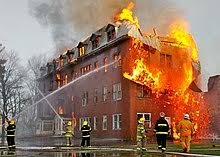
Fire has been present in literature for a long time. For example, it appears with relevance in Mark Twain’s The Innocents abroad (1835-1910), and, much more recently, with central prominence in El Fuego Callado (Caligrama 2019), by Félix Romero Cañizares; for a collection of texts, see [1]. It has also been a fundamental part of the plot of many films. For example, Gone with the Wind (1939), winner of 8 Oscars, and the very interesting Fahrenheit 451 (1966), both of which former novels; more recently, we find Inglourious Basterds (2009) and O que arde (2019), Jury Prize at Cannes.
Fires can be of different types, depending on the physical properties of the fuel:
-
Class A: Fires involving solid materials of an organic nature: wood, fabrics, paper, etc.
-
Class B: Fires involving liquids or liquefiable solids: oil, petrol, paint, waxes, etc.
-
Class C: Fires caused by flammable gases: natural gas, hydrogen, propane, etc.
-
Class D: Caused by combustible metals: sodium, magnesium, potassium, etc.
-
Class E: Related to oils.
The latter are particularly difficult to extinguish due to the high temperatures they reach.
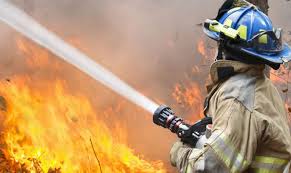
One of the most famous fires in history took place in Rome in 64 AD during the Nero’s reign. It has been the subject of a lot of speculation. Indeed, it has often been claimed that it was the emperor himself who set it. However, it is known nowadays that Nero ordered his army to extinguish it.
Together with this, we can mention the fires at the Library of Alexandria (48 BC), the City of London (1666), San Francisco (1906), Australia (2009) and California (2020).
Wildfires
In the above list of, the last two are wildfires. Let us note a few facts:
-
In Australia, more than 750 houses were destroyed and more than 1300 people lost their lives. After a thorough investigation, the police declared that at least part of the fire was intentionally set.
-
In California, we find the largest forest fire in history: 400,000 hectares were burned, about 1,300 houses were destroyed and an enormous environmental damage was infringed to the area.
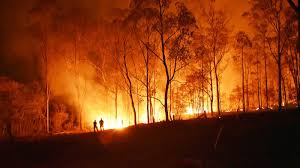
Forest fires are characterized by their great extension, the speed of advance, the sudden changes of direction and the ability to overcome obstacles. They often spread out of control, affecting all types of living beings.
To give an idea of the magnitude of the danger that usually surrounds a wildfire and the task involved in putting it out, I have included here the testimony of Pascual Gil Muñoz, an engineer specialized in fires, Head of the Service of Public Use of the Natural Environment of the Cabildo of Tenerife: “Year 2005. Backup was requested for a fire in El Hierro. We left the base at La Guancha and when we arrived we found the fire almost extinguished, smoking and the wind was calm. We landed and were sent to finish off a flank. When we were there, it flared up again from the tail, the wind changed direction and what was a tail became a head. There was a helicopter on the ground, which had broken down. The fire advanced towards it and exploded, it was totally dissolved on the ground. To our rear we heard the explosion and saw 40-metre flames. We had to escape and evacuate a lot of crews of very young people and now we had no idea where the safe zone was. The fire, which was 200 hectares, ended up burning 4,000 or 5,000”.
In a wildfire, three phases are usually distinguished: initiation (which can be due to natural causes or human action), spread and extinction (which can also be due to natural causes such as rain or human action).
Almost always, the fire is extinguished before it gets out of control. However, in some cases, extinguishing is very difficult without favourable changes in atmospheric conditions. In fact, there are two ways to “attack” the fire: directly (acting on the burning material), or by indirect means (preparing the ground and environmental conditions generally before the arrival of the fire, e.g. by improvising firebreaks or drenching unburned fuels).
A mathematical model
For a fire to occur, three elements must be combined: the existence of fuel, the presence of oxygen and the action of heat or activation energy.
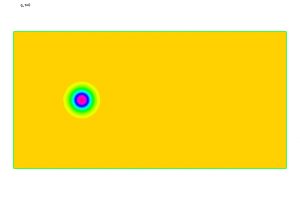
In the sequel, I will refer to a system of equations whose solutions describe the behavior of the fire in a typical forest location. The model has been derived and solved by a group of researchers at the University of Salamanca; see the PhyFire tool in [2]. The variables of interest are the following: the solid and gaseous fuel densities, respectively \(y_s\) and \(y_g\); the oxygen density \(y_O\); the temperature \(Q\) and the velocity of the air \(U\) in the region determined by the affected ground up to a given height.
The spatial domain considered is \(D = \{ (x_1,x_2,x_3) : (x_1,x_2) \in G, \ \ h(x_1,x_2) < x_3 < \delta \}\) where \(G\) is a two-dimensional region (the projection on a horizontal plane of the terrain) and \(h\) is the height or “elevation” of the terrain. We want to know how the system evolves for time instants \(t \in (0,T)\).

In the model, accepting that the horizontal dimensions of the enclosure are much larger than the height at which the fire acts, the variables are given as follows:
First, \(Q = q(x_1,x_2) (\delta – x_3)/(\delta – h(x_1,x_2))\), where \(q\) is the floor temperature.
On the other hand, \(U = (V_1,V_2,V_3)\), with \(V_i = \mathcal{L}_i(q, v_m, h)\) (\(i=1,2,3\)), where \(v_m = v_m(x_1,x_2,t)\) is the wind speed (which we assume to be known, horizontal and independent of \(x_3\)). The \(\mathcal{L}_i\) are applications that allow to calculate “instantly” the air velocity components from the gradient of the ground temperature, wind speed and elevation.
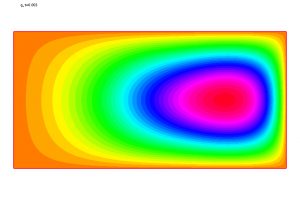
Finally, \(y_s\), \(y_g\), \(y_O\) and \(q\) are functions of \(x_1\), \(x_2\) and \(t\). They constitute the solution of a nonlinear system of evolution PDEs (with convection, diffusion and reaction terms) where \(v := (V_1,V_2)|_{x_3 = h(x_1,x_2)}\), together with appropriate initial and boundary conditions, is given.
Details are given in [3]. There, it is indicated that the modeling of combustion is based on the results of [4] and convection (i.e. the determination of \(V\)) rests on the arguments of [5]. An important feature of the PDE satisfied by \(q\) is the presence of a diffusion term of the form
$$
– \sum_{i=1}^2 \partial_i \left( \kappa_q q^3 \partial_i q \right), \ \hbox{ con } \ \kappa_q > 0;
$$
This corresponds to the so-called Weber approach, see [6].

A way to solve the system satisfied by these variables under realistic conditions and thus able to determine the evolution of a fire (albeit approximately) is described in detail in [3]. Essentially, the method consists of discretizing in time and, at each time step, (a) calculating the values of \(y_s\), \(y_g\), \(y_O\) and \(q\) corresponding to immediately previous values of \(v\); (b) updating the values of \(V_i\) and \(v\). In this way, results are obtained that show the progress of solid and gaseous fuels. As an example, see Figures 4 to 7 for the temperature evolution in a numerical simulation, with constant wind from left to right.
A question of great interest that has not yet been analyzed in depth is the following: how can we control this system from the boundary of the burned area? That is, which data in the equations can be fixed to reduce the burnt region in space and time as much as possible?
To learn more
- https://osbodigital.es/2019/05/21/el-fuego-y-los-incendios-en-la-literatura/
- https://sinumcc.usal.es
-
M.I. Asensio, L. Ferragut, J. Simon, “Modelling of convective phenomena in forest fire”, Rev. R. Acad. Cien. Serie A, Mat. Vol. 96 (3), 2002, pp. 299-313.
-
M.I. Asensio, L. Ferragut, “On a wildland fire model with radiation”, Int. J. Numer. Meth. Engng. 2002; 54:137-157.
-
D. Bresch, J. Lemoine, J. Simon, “Nonstationary models for shallow lakes”, Asympt. Anal., 22, 15-38.
-
R.O. Weber, “Towards a comprehensive wildfire spread model”, Int. J. of Wildland Fire, 1 (4), 247-248.

Leave a Reply